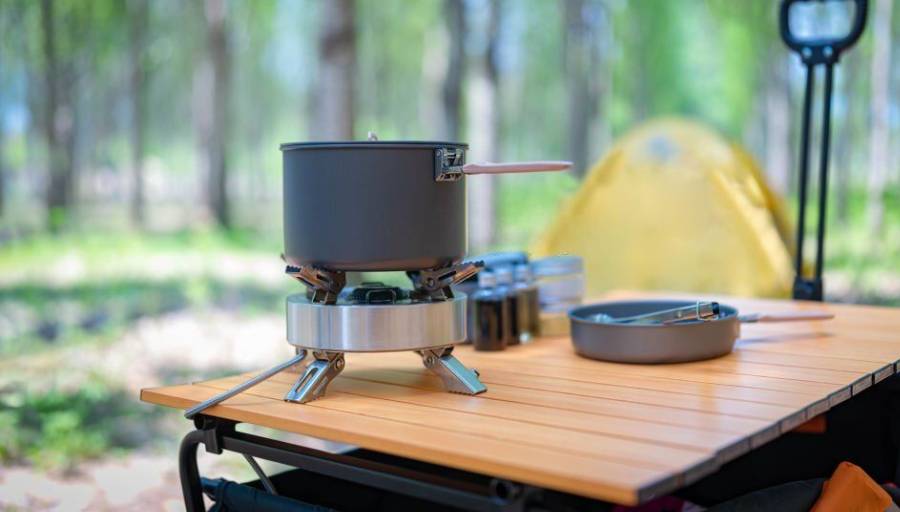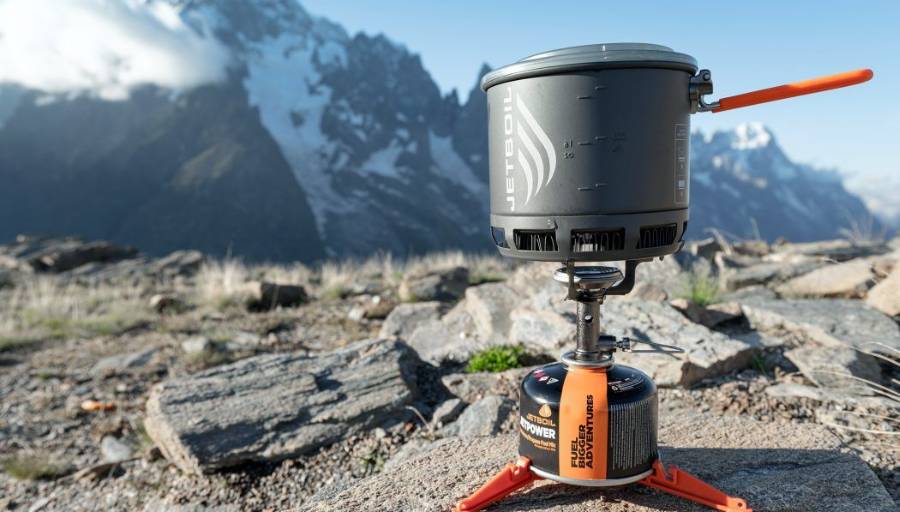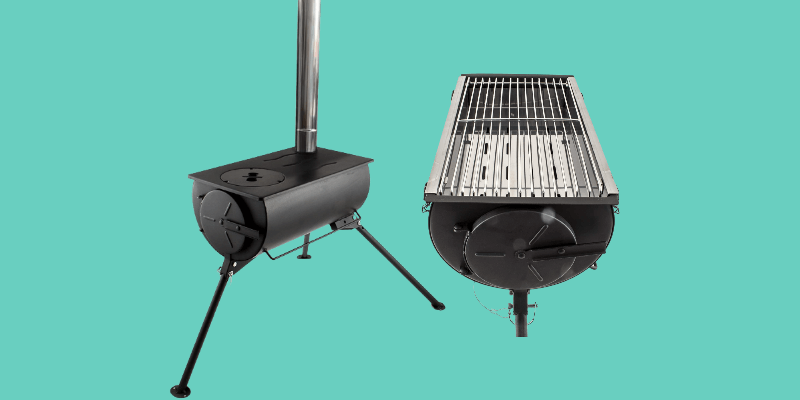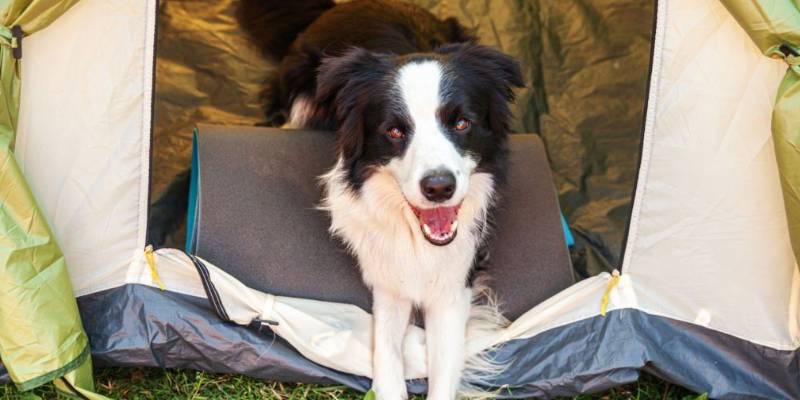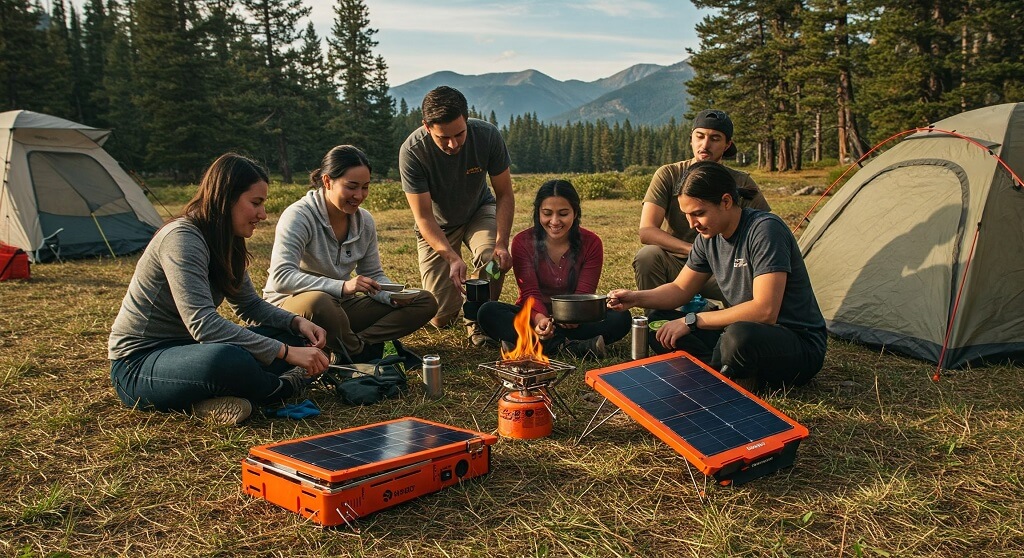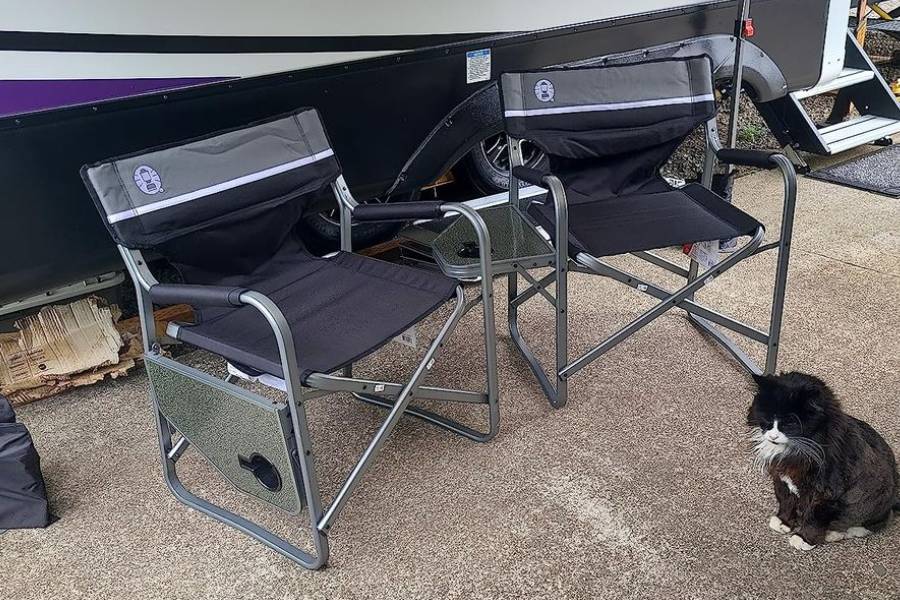10 Best Bushcraft Knives of 2025: Tested
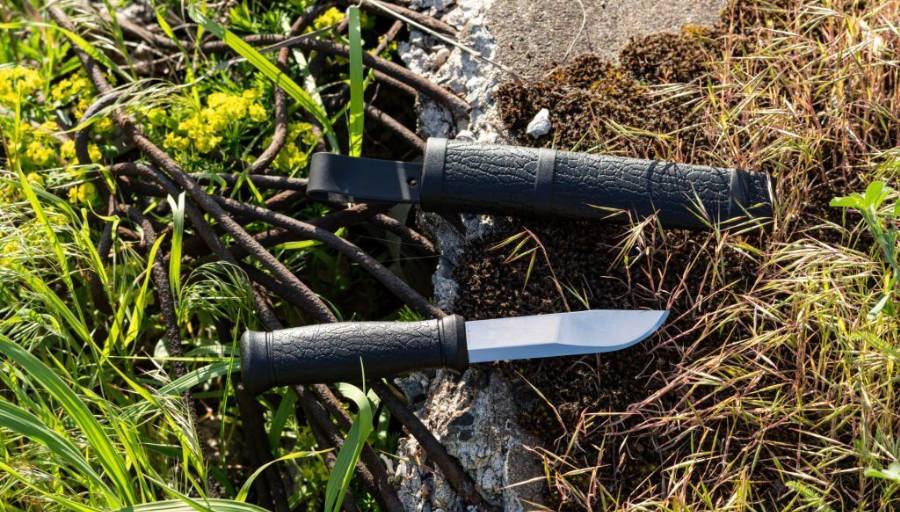
Carrying high-quality bushcraft knives can significantly enhance your outdoor experience and be invaluable in emergencies. Whether you’re preparing firewood, cutting through dense foliage, building a shelter, crafting traps for small game, or even using it as a last-resort weapon, a high-quality bushcraft knife is fundamental.
But with a vast array of bushcraft knives available, selecting the perfect one can feel like navigating uncharted territory. Fear not! This comprehensive guide equips you with the knowledge to choose the best bushcraft knife for your needs, ensuring you have a reliable and versatile tool by your side on every outdoor adventure.
Best Bushcraft Knives in 2025
If we had to choose only one model among our favorites, it would be the Morakniv Kansbol: it is made of high-quality stainless steel blade which guarantees clean cuts. On the other hand, if you’re looking for an affordable solution the Morakniv Companion is the best option available to you. Thanks to its ergonomic high-friction handle, it adapts to all kinds of activities and tasks and benefits from a comfortable grip.
Now take a look at the top 10 best bushcraft knives of 2025:
| Image | Name | Blade | Thickness | Price |
 | Morakniv Kansbol | 109mm | 2.4mm | Check |
 | Morakniv Companion | 104mm | 2.5mm | Check |
 | Morakniv Outdoor 2000 | 109mm | 2.5mm | Check |
 | Morakniv Craftline | 109mm | 2.3mm | Check |
 | KA-BAR Becker BK2 | 133mm | 6.6mm | Check |
 | Morakniv M-10791 | 109mm | 3.2mm | Check |
 | Perkin Custom Made | 116.84mm | 3.5mm | Check |
 | Fallkniven F1PRO10 | 76.2mm | 3.2mm | Check |
 | Gerber Gear 30-001655 | 101.6mm | 3mm | Check |
 | Cold Steel SRK Rescue | 96mm | 3mm | Check |
1. Morakniv Kansbol Fixed Blade
Pros
- High-quality stainless steel blade
- Exceptionally good corrosion resistance
- Easy to maintain and keep clean
- Durable polyamide handle with exceptional grip
- Practical case
Cons
- A little expensive, but the price is amply justified
Morakniv’s reputation is well established, and if our top 10 opens on one of its products, it is certainly not due to chance. For the design of the blade of this knife, the brand used high-quality stainless steel. This is what sets it apart and makes it a noteworthy choice.
The knife is very resistant to corrosion and effective for many tasks. Also, you wouldn’t have to invest a lot of time in maintaining it and keeping the blade clean. The versatility of the Morakniv Kansbol is one of the reasons we put it first place. From carving to food processing, anything is possible.
If you’re concerned about the physical characteristics of its blade, rest assured that every detail has been carefully crafted. You can easily tackle a variety of tasks with the confidence of achieving clean, precise cuts. With a size of 109mm, the blade has a thickness that allows it to lend itself to tasks like peeling the skin, etc.
Whether as a simple garden knife or for hiking, the Morakniv Kansbol will be a reliable companion. Furthermore, it is highly praised for its durable polyamide handle, designed with a pattern to ensure an impeccable grip. Finally, this bushcraft knife comes with a practical multi-mount tactical case. It is also lightweight, making transporting it very easy.
2. Morakniv Companion Heavy-Duty
Pros
- Easy to clean
- Corrosion resistant
- Perfect and comfortable grip
- Ergonomic handle with high friction
- Good blade size and thickness
- Easy to carry with included case and belt clip
Cons
- Carbon steel does not necessarily retain its sharp edge for extended periods, and this knife is no exception.
The second-best bushcraft knife and our personal favorite is the Morakniv Companion. This esteemed Swedish brand is a prominent figure in the survival knife market. Therefore, it’s no surprise to find several models from this brand in our top 10 list of the best bushcraft knives.
This model is well known for its wide variety of carving, crafting, construction, and fishing knives. The Morakniv Companion that we recommend here has multiple exceptional features, including the fire starter built into the handle. First and foremost, its blade size of 104 mm and thickness of 2.5 mm provide ample capability for a wide range of activities and tasks. The blade is made of stainless steel and is therefore resistant to corrosion.
Whether you are an adventurer or a professional (hunter, forester, fisherman…), the Morakniv Companion will meet all your needs. Its lightweight nature ensures that adding it to your bag won’t significantly increase its overall weight. It is easy to maintain, making it a practical choice for outdoor enthusiasts.
The polymer sheath, coupled with the belt equipped with a button system, makes it effortlessly portable, enabling you to take it anywhere you want to go. Moreover, if this bushcraft knife is in our top 10, it is also because of the characteristics of the ergonomic handle with high friction, which offers a perfect and comfortable grip.
3. Morakniv Outdoor 2000 Fixed Blade
Pros
- Mixed grind (Scandinavian and flat) for great versatility
- Handles very well when cutting
- Good value for the money
- Lifetime warranty
Cons
- Rounded back: not good for starting a fire
- Not designed for heavy-duty works
Our third favorite is designed for hunters and anglers. This model features a corrosion-resistant stainless steel blade, making it well-suited for use in damp conditions. Coupled with its contoured rubberized handle, it provides a reliable bushcraft knife option even in wet environments.
Returning to the blade, it measures 109 mm and features a mixed grind: Scandinavian for slicing and flat towards the tip for finer, more delicate tasks. You’ll be pleasantly surprised at how effective this bushcraft knife is at cutting, especially considering its price point.
The Morakniv 2000 handles push cuts very well and moves effortlessly through the wood. Even with harder materials, the sharpness and ease of cutting are remarkable. This means that this bushcraft knife is clearly not designed for heavy-duty work.
Whether you are right-handed or left-handed, its grip is very comfortable. The plastic handle offers good ergonomics and can lend itself to long sessions of use. As for the included polymer case, it is very sturdy and equipped with a leather loop for attaching to the belt.
4. Morakniv Craftline Robust Knife
Pros
- Designed with ergonomic rubber and non-slip grip
- High carbon steel blade
- Very durable and easy to sharpen
- Very affordable price
Cons
- May rust, but the special DLC coating delays this
Here is a knife to be considered one of the best bushcraft knives on the market. Designed with craftsmen in mind, the Morakniv Craftline knife comes complete with its sheath, offering remarkable versatility. It’s easy to re-sharpen, which guarantees reliable performance over extended periods of use.
This knife covers most outdoor enthusiasts’ needs with its Scandinavian grind blade made of highly durable carbon steel. This model has been hardened to handle most of the toughest jobs in the woods. The Craftline model is specially designed to withstand massive force and pressure.
Even though carbon steel does not have non-corrosive properties, this survival knife can count on a special DLC coating to prevent it from rusting. The blade is fully coated, including the edges. This means you can use it confidently in any weather condition without worrying about damage or corrosion.
Another feature that we like is its rubber handle with an ergonomic design that offers high friction and comfortable usage. It has additional features such as a fire starter, which can be very practical whatever the outdoor condition. You can indeed create sparks even when soaked.
5. KA-BAR Becker BK2 Campanion
Pros
- Ideal handle for men and women
- Lightweight and easy to carry
- Thick blade ensures good durability
- Comes with a hard shell nylon sheath
Cons
- Top heavy when inside the sheath
If you’re on a tight budget, the KA-BAR Becker BK2 is an option you should seriously consider. This Bushcraft knife features a carbon steel blade. It’s a full tang heavy-duty field knife ideal for various camping chores.
Thanks to its lightweight design, it’s easy to carry around. It’s also a versatile knife that can be used for everyday tasks. While its blade is somewhat thick, it may not be the optimal choice for chopping or slicing, which are tasks better suited for thinner blades. However, this does not prevent it from managing it quite well.
If the design of the blade implies a compromise on versatility, the knife makes up for it with its easy grip. It is equipped with a rubberized handle which adheres very well and guarantees the precision of a good invoice. However, the standard sheath may not securely hold the knife in place if the secondary snap around the handle isn’t utilized.
The design of the KA-BAR Becker BK2 is both eye-catching and straightforward. Its robust construction also adds to its ease of use. However, the grinds on the blade are different in width on the left and right sides, which means the blade is not symmetrical on the left and right sides.
6. Morakniv Carbon Steel Blade
Pros
- Solid and durable construction
- Thick handle for a comfortable grip
- Black coating that protects against corrosion
- Rope cutting serration on the blade
Cons
- Plastic sheath
If you’re seeking a high-quality camping knife where the price won’t give you pause about using it for rigorous tasks, this knife is an excellent choice. It is equipped with a 3.2 mm thick blade. With a size of 109 mm length, the blade is made of stainless steel and has a DLC anti-corrosion treatment ensuring great durability.
The factory edge on this knife is exceptionally impressive, surpassing even what I’ve seen from Cold Steel. The main highlight of the blade is that it is half-serrated, making it perfect for cutting rope and fiber.
Another notable feature is the black rubber grip, which is durable and water-resistant unlike Micarta or other popular grip materials. As well as being great in the hand, the Morakniv Bushcraft SRT inspires confidence with its quality. It is a very versatile option for moderate tasks in the field.
The back of the blade has been specially ground for use with a fire starter (not included). For carving, scraping, food preparation, and fire, it’s a lovingly designed and beautifully functional tool.
7. Perkin Custom Handmade
Pros
- Handle designed to ensure a firm hold
- Excellent build quality
- Easy to sharpen and hold
- Full tang design
Cons
- The medium-quality leather case
Our next model, with this superb handmade bushcraft knife, offers everything you would expect from a model in its category and much more. Everything about the Perkin Knives Damas exudes quality: from the steel blade to the beautifully finished handle. The price is also accessible to all people.
We take our hats off to the brand for the attention to detail with which this knife is designed, which almost makes you forget that it is a handcrafted model. The Perkin Damascus bushcraft knife features a 90-degree edge on the spine which is great for rubbing a fire flint in toto start emergency fires.
Compared to our other favorites, you may need some time to get used to the shape of the Knives Damas, but in the end, its many great possibilities will help you to make your outdoor adventures enjoyable. air.
After taking it out of the box, you’ll notice its remarkable robustness immediately. This bushcraft knife seems to be made to last over time, and the many positive opinions going in this direction confirm it. Its handle offers excellent blade and tip control. You can therefore be sure to carry out various tasks with perfect mastery: sculpture, digging, starting a fire, etc.
8. Fallkniven F1PRO10 Thermorun
Pros
- Carving prowess
- Handle comfort
- Excellent Reputation
- Great price
Cons
- Harder to sharpen
- Mediocre scabbard
For years, the Fallkniven F1 has been considered one of the best choices among bushcraft knives. Although the price of some handmade blades has gone up, the efficiency of the Fallkniven factory today makes the F1 something of a bargain. And if you’re looking for a bushcraft knife for lifetime use, you should consider this model.
The black Thermorun handle swells to fit the palm, and the Zytel scabbard is serviceable, if a bit basic. But the F1’s selling point has always been its magnificent blade.
Convex grinding is also a special feature that provides a different experience from your typical Scandi or saber. Its bevel curves down towards the edge (almost like an axe). This generally results in long edge retention and more overall efficiency than a standard angular sharpening.
Sharpening this knife can be a bit of a different experience, but the performance boost is undeniable. Also, if you’re looking for something with the pedigree of a Morakniv but with an upgrade in materials, construction and price, you’ll be highly impressed with Fallkniven.
9. Gerber Gear 30-001655 Principle
Pros
- A multitude of transportation options
- Small and lightweight
- Ergonomic design
- Versatile blade
Cons
- Small for extended use
If you’re in search of a modern, minimalist interpretation of the classic bushcraft knife, the Gerber Principle is a fantastic choice. With its scaled-down design, it has a 101.6mm blade sharpened to what the manufacturer describes as “Scandinavian zero-degree sharpness”.
The 420HC steel blade is covered with two over-molded rubber grips with three evenly spaced holes along the handle. They are emphasized as anchors, but we see them as a smart way to cut weight. The total weight of just 100g makes it one of the lightest bushcraft knives on this list.
However, the standout feature of the Principle lies in its wide array of transportation options. Its triple-mount holdall can be used in multiple carry configurations. So it will fit almost any belt and bag in your collection. The shape of the blade is versatile. The flat-to-tummy balance of the Gerber Principle makes it well-suited for a range of camp tasks, from food preparation to woodworking.
However, there are a few issues. While the Principle is eminently portable, it’s relatively small. Users with large hands need to try it before buying. And if you’re looking for a tool to use for hours on end, a slightly larger tool would be ideal. But as a medium-duty or backup knife, this knife is perfectly at home in the woods.
10. Cold Steel SRK Survival Rescue
Pros
- Handle comfort
- Includes knife sheath
- Very sharp
- Looks very nice
Cons
- Hand wash only
Our top 10 closes with this superb handmade bushcraft knife which offers everything you need for a bushcraft experience. If you’re looking for a versatile knife for survival applications, the Cold Steel 49LCK Srk is hard to beat. The knife itself comes with a premium Secure-Ex. You can also purchase a fire starter and sharpening stone separately.
The Cold Steel 49LCK Srk has long been considered the paragon of the Cold Steel line. The 96mm SK-5 steel blade is ideal for most types of outdoor activities. Its black anti-corrosion coating helps prevent it from rusting. It also has a nice finish with no dings or tool marks.
The Survival’s high-friction rubber is closer to what’s found on the brand’s Companion line, which is a more comfy couch and less waiting room chair for your fingers. If you can tolerate the black-on-black aesthetic, this is an excellent deal for a complete bushcraft knife.
However, there is no clip on the back of the sheath. You will find a snap on the backside of the belt loop, which allows you to put the sheath on and remove it from your belt without removing your belt.
The Different Types of Bushcraft Knives

Various types of bushcraft knives are designed for different uses. Therefore, it’s crucial to hone in on specific design factors that align with your needs and requirements.
Woodworking
Also known as “woodcraft” knives, these tools are invaluable for woodworking, including the construction of shelters or crafting tools like traps. When selecting a knife specifically for woodworking tasks, it’s important to prioritize models with a sturdy blade and, most importantly, an ergonomic handle that features ample curves. This is a critical consideration, as a flat and tall handle can lead to discomfort and irritation during prolonged use.
Survival
When choosing a bushcraft knife for survival tasks, the most crucial factor is to opt for a knife with a full-tang blade, which means the blade extends all the way through the knife’s handle. This design, known as a “full-tang” blade, ensures a sturdy construction that can withstand the rigors of survival scenarios, including tasks like batoning wood or other demanding uses.
Food Preparation and Collection
When acquiring a knife for collecting and preparing food, prioritize a model with a thin blade, as it facilitates slicing fruits and other foods effortlessly. Additionally, opting for a knife with a longer blade enhances versatility, making tasks like lifting fish fillets more manageable. Ensure the knife is easy to clean, without crevices or slots where food particles can accumulate, to maintain hygiene and convenience during outdoor use.
Make a Fire
During your woodland adventures, making a fire is often a necessity. In such situations, your bushcraft knife should have a spine that protrudes slightly from the blade, allowing you to strike a firestone against it for ignition. Additionally, the knife’s construction should be robust enough to help you split kindling effectively, further aiding in fire preparation and maintenance.
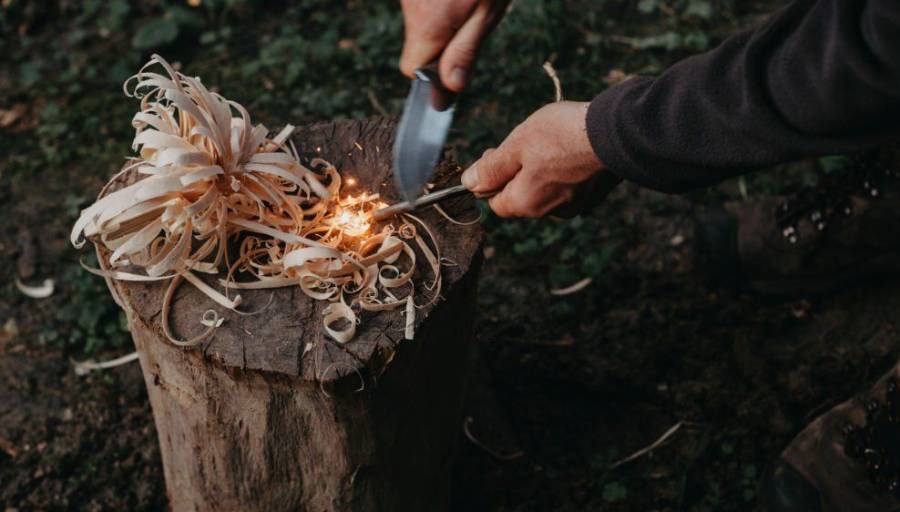
Best Bushcraft Knife Buyer’s Guide
Once you’ve identified the environment and specific tasks for which the bushcraft knife will be used, there are several other important criteria to consider:
Blade Size
Carrying a bushcraft knife with an oversized blade can be impractical as it may hinder detailed tasks because of its bulkiness. For survival situations, complementing a bushcraft knife with an axe or machete can be beneficial, as these tools are better suited for heavy-duty chopping and cutting tasks.
On the other hand, if you are going hiking or engaging in classic trekking, a versatile bushcraft knife can be your ideal companion for various situations. A blade size ranging between 89mm and 152mm (3.5 to 6 inches) is often sufficient for most tasks encountered during outdoor activities. This size strikes a balance between functionality for detailed work and the ability to handle moderate chopping and cutting tasks when needed.
Shape and Design of the Blades
A good bushcraft knife should feature a long, flat blade that tapers to a point near the middle of its handle width. This design ensures versatility in meticulous tasks, drilling surfaces, and digging. The knife’s solid and strong construction is crucial, given the stress on its point, while maintaining a thin and sharp blade for optimal usefulness and effectiveness.
Different Types of Blade Grind
Blade grinds play a crucial role in determining a knife’s cutting performance and suitability for specific tasks. Here are some common blade grinds found in bushcraft knives:
- Scandinavian Grind: Traditional and easy to sharpen, ideal for woodworking and carving, but can have a weaker edge due to its small bevel angle.
- Flat Grind: Versatile and agile, suitable for a wide range of tasks but more fragile to lateral forces and harder to sharpen due to its thinness.
- Convex Grind: Very solid with good slicing and chopping capabilities, but challenging to sharpen and not as sharp as flat grinds due to its curved edge.
- Hollow Grind: Excellent for slicing tasks like skinning and cutting meat, but not ideal for heavy-duty tasks due to its thin edge.
- Chisel or Asymmetrical Grind: Easy to sharpen and strong, suitable for cutting branches but less versatile and can be confusing to handle because of its single-sided design.
Blade Materials

The blade material is undoubtedly the most critical aspect of any bushcraft knife. If the blade material is weak or of poor quality, it will likely lead to frequent disappointments.
On the market, you’ll find blades made from stainless steel as well as steel-carbon alloys. Stainless steel blades offer the advantage of rust resistance, making them ideal for use in humid environments. However, the more stainless the steel, the more flexible and fragile it tends to be.
On the other hand, carbon steel blades do not suffer from this brittleness issue since they lack chromium, which is responsible for rust resistance. These blades excel in heavy-duty tasks, maintain excellent sharpness, and are easy to sharpen.
Chrome blades, while softer compared to carbon steel and stainless steel, are suitable for less demanding outdoor tasks. They have better corrosion resistance due to the presence of chromium and often have a longer lifespan as a result.
Shaft and Handle Materials
Various materials are utilized for the handle design of bushcraft knives, each with its own advantages and disadvantages. Traditional options include wood, known for its good durability but susceptible to mold and less long-lasting compared to composite materials.
Other popular choices include micarta (resin impregnated with cotton or paper) and G10 (super fiberglass), known for their durability and strength, making them suitable for bushcraft knife handles. Rubber and firm plastic are also common alternatives, providing a secure grip and improved handling.
Folding or One-Piece Bushcraft Knife
The choice between these two options can depend on several factors. One-piece (full-tang, non-folding) bushcraft knives are stronger because the force applied to the blade is distributed along the entire length of the knife. On the other hand, depending on the length of the knife itself, it may be less practical to carry.
If you prefer to carry a knife discreetly without drawing attention, folding knives are a suitable option as they are more convenient to carry. However, folding knives are generally less sturdy in design compared to fixed-blade knives. That said, it is necessary to be vigilant about the hinge mechanism which is its weak point. If it breaks, the knife will be unusable.
Related Questions
What is the best material for a knife?
The best material for a knife depends on the intended use. Stainless steel offers rust resistance but can be flexible. Carbon steel provides excellent sharpness but is prone to rust. High-carbon stainless steel combines the benefits of both. Damascus steel is prized for its beauty and strength. Ultimately, the best material varies based on factors like corrosion resistance, edge retention, and overall durability, tailored to the knife’s specific purpose.
How to sharpen a bushcraft knife?
Sharpening a bushcraft knife involves several steps:
- Selecting the Sharpening Tool: Choose a sharpening stone or system suitable for your knife, such as a whetstone, sharpening rod, or guided sharpening system.
- Preparing the Stone: If using a whetstone, soak it in water for about 10-15 minutes to ensure proper lubrication during sharpening.
- Setting the Angle: Determine the angle of the blade edge (usually around 20 degrees for bushcraft knives) and maintain this angle consistently while sharpening.
- Starting with Coarse Grit: Begin sharpening with the coarse side of the stone, using smooth and consistent strokes along the entire length of the blade. Repeat this process until you establish a burr (a slight edge fold).
- Switching to Fine Grit: Flip the stone to the fine side and repeat the sharpening process to refine the edge and remove the burr.
- Honing the Edge: Optionally, use a leather strop or honing rod to further refine and polish the blade edge for optimal sharpness.
- Testing the Sharpness: Carefully test the knife’s sharpness by gently slicing through paper or performing a shaving test on a piece of wood.
- Cleaning and Storing: Clean the knife blade to remove any metal particles and store it in a dry and safe place to maintain its sharpness.
What is the easiest bushcraft knife to sharpen?
Bushcraft knives with Scandi grinds are easy to sharpen due to their single bevel design. Flat grind knives also offer straightforward maintenance, while convex grind knives, though slightly more intricate, are still manageable to sharpen. High carbon steel knives are generally easier to sharpen than stainless steel ones.
What’s the ideal blade length for versatile tasks?
For versatility in bushcraft tasks, an ideal blade length typically falls between 4 to 6 inches (10 to 15 centimeters). This range provides a balanced combination of capabilities. A shorter blade, around 4 inches, offers precision for detailed work like carving and crafting. Meanwhile, a slightly longer blade, around 6 inches, provides more leverage and chopping power for tasks like splitting wood or processing larger games.
Can a bushcraft knife also serve as a hunting tool?
Yes, it can. While a dedicated hunting knife may have specific features for skinning and processing games, many bushcraft knives can be used effectively for these tasks as well.
Can I use a bushcraft knife for self-defense in an emergency?
Although a bushcraft knife can be used defensively in a dire situation, it’s important to remember that it should not be relied upon as a primary self-defense tool. Dedicated self-defense items are more effective and safer.
Conclusion
The right bushcraft knife is an investment in self-reliance and wilderness exploration. Remember, the ideal bushcraft knife is the one that best suits your individual needs and preferences. Consider your budget, bushcraft style, and the tasks you’ll be tackling most often. With the knowledge you’ve gained from this guide, you’re well-equipped to make an informed decision and select the perfect blade to be your trusted companion on countless outdoor adventures.
Now go forth, sharpen your skills, and forge your path through the wilderness with confidence!
These guides might interest you...

